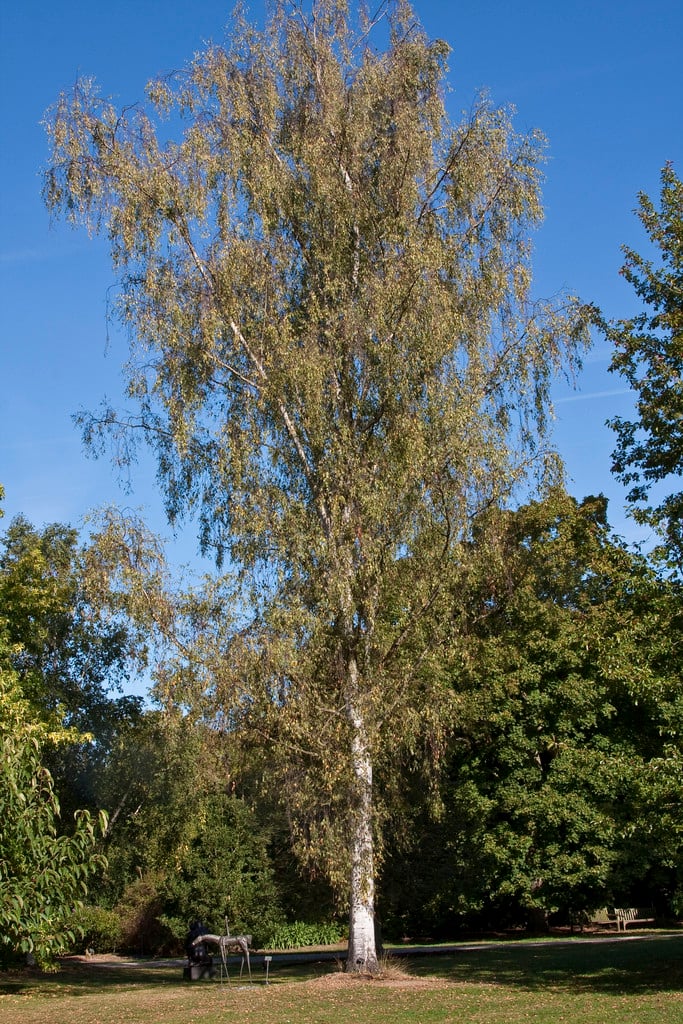Betula pendula subsp. pendula 'Dalecarlica' ambig.
silver birch 'Dalecarlica'
Large, deciduous tree, rare in cultivation, with branches pendent at the tips and diamond-shaped, deeply cut feathery leaves. Peeling white bark becomes black and roughened at the base with age. Bears yellow-brown catkins in early spring, leaves turn yellow in autumn

Buy this plant
Size
Ultimate height
8–12 metresTime to ultimate height
10–20 yearsUltimate spread
2.5–4 metresGrowing conditions
Moisture
Moist but well–drainedpH
Acid, Alkaline, NeutralColour & scent
| Stem | Flower | Foliage | Fruit | |
| Spring | White | Brown Yellow | Green | |
|---|---|---|---|---|
| Summer | White | Green | ||
| Autumn | White | Green Yellow | ||
| Winter | White |
Position
- Full sun
- Partial shade
Aspect
East–facing or North–facing or South–facing or West–facing
Exposure
Exposed or Sheltered Hardiness
H7Botanical details
- Family
- Betulaceae
- Native to GB / Ireland
- No
- Foliage
- Deciduous
- Habit
- Pendulous weeping
- Genus
Betula can be deciduous trees or shrubs, usually colouring well in autumn and often with striking white, pink, or peeling brown bark; separate male and female catkins open before or with the leaves in spring
- Name status
Accepted
How to grow
Cultivation
Grow in moderately fertile, moist but well-drained soil, in full sun or light shade
Propagation
Propagate by seed of known wild origin (most cultivar seed will produce hybrids), or by softwood cuttings in summer or grafting in winter
Suggested planting locations and garden types
- Architectural
- Coastal
- Cottage and informal garden
- Wildlife gardens
Pruning
Pests
May be susceptible to birch borers, leaf-mining sawflies and aphids
Diseases
May be susceptible to honey fungus, a tree rust and powdery mildews
Get involved
The Royal Horticultural Society is the UK’s leading gardening charity. We aim to enrich everyone’s life through plants, and make the UK a greener and more beautiful place.